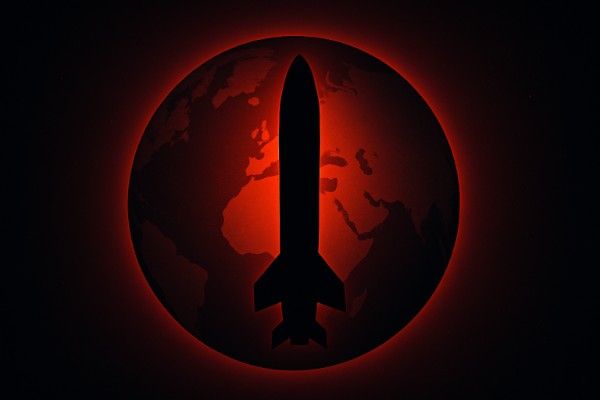In the ever-shifting landscape of global politics, alliances and partnerships often evolve less through revolutionary turns and more through gradual renewals. The recent U.S.-India Defence Framework Agreement of 2025 can also be understood in the same context. The agreement was announced after the meeting between the U.S. Defence Secretary Pete Hegseth and Indian Defence Minister Rajnath Singh, and it is a telling example of continuity masked as change. The agreement was signed when both nations were witnessing tensions over trade, tariffs, and the import of Russian oil, which has strained their relationship for quite some time. However, the signing of this agreement does not mark a new chapter in their relationship; rather, it merely reaffirms an existing script written two decades ago. The pact will reinforce the already existing technological and military cooperation between the U.S and India.
The 2025 defence agreement between the U.S and India, which has been framed as a ten-year roadmap for defence collaboration and innovation, bears a striking resemblance to its predecessors. From the 1995 Agreed Minutes on Defence Relations to the 2005 and 2015 Framework Agreements, the central idea has remained the same, which was to institutionalize defence cooperation through joint exercises, technology sharing, and policy coordination.
The U.S. and India have walked this path before. The 2005 framework, which was signed under the Bush Administration, envisioned collaborative maritime security, counter-terrorism efforts, and humanitarian assistance. The agreement, signed for a ten-year term, reflected the global security narrative in the post-9/11 environment. A decade later, in 2015, Ashton Carter and Manohar Parrikar refined the partnership by emphasizing co-development and co-production through the 2012 Defence Technology and Trade Initiative (DTTI). The Agreement was signed during the 10-day Asia-specific trip of Ashton Carter and reflected the U.S desire to consolidate its Asia-Pacific partnerships. Therefore, the 2025 agreement is not a departure from history, but its natural continuation, updated with the lexicon of regional stability and technological innovation and its significance does not lie in the novelty of words but in reaffirmation.
Despite successful continuation, this renewal does not imply harmony and both have witnessed tensions over trade and tariffs in recent months. The trade tensions between Washington and New Delhi escalated when President Trump imposed 50% tariffs with a 25% penalty for buying Russian oil and arms. These actions, along with new restrictions on H-1B visas, struck at the heart of India’s economic and technological engagement with the United States. These frictions exposed the fragility underneath the rhetoric of strategic partnership, and they also revealed the transactional undercurrent in U.S. policy that India is a strategic partner with convenience, and it is not immune to coercive diplomacy when their interests diverge.
Despite these tensions, this is precisely where the 2025 framework becomes a tool of repair. For the U.S, this agreement serves as a balancing mechanism. Although the details of the Agreement have not been disclosed but it seems that by offering India technological access, the U.S is looking for compliance with trade. From the U.S perspective, this Agreement will provide economic gains through continuous high-value exports to India that will assist the U.S’ military industrial complex. Furthermore, this Agreement also fits the U.S policy of containing China’s expanding influence through regional partnership. India’s inclusion in the QUAD (alongside Japan and Australia) has already positioned it as a key player in the U.S.’s broader Asia-Pacific strategy. The 2025 framework simply cements that role.
For India, this represents a tactical accommodation and a reminder that strategic partnerships, even unequal ones, can be exploited for domestic gains and geopolitical signalling. The 2025 defence agreement, which revolves around deeper coordination, intelligence sharing, and technological collaboration serves India’s short-term ambitions; however, it does not constitute a shift in its grand strategy. In the grand scheme of things, it is paradoxically noticeable that nations sometimes seek autonomy through dependence, and cooperation often blooms in the shadow of confrontation.
Now the question revolves around India’s strategic calculus and how it will balance its military trade between Moscow and Washington. Historically, India has heavily depended on Russian arms, with over 62% of its arms from Russia. The dependence has gradually declined to 45% while the U.S imports have increased. This gradual decline reflects diversification rather than a decisive shift. The current framework merely shows India’s hybrid posture where it is willing to draw from both nations. New Delhi’s foreign policy remains defined by multi-alignment, not alliance.
It is also noticeable that the U.S. assumption of India’s strategic intent might be overly optimistic. While the U.S views India as a counterweight to Beijing, India views itself as an independent actor that is pursuing its own trajectory. Its normalization of ties with China, cautious disengagement from border hostilities, raising bilateral trade and Modi visit to China after seven years reveal a pattern of pragmatic coexistence rather than confrontation. Hence, the U.S. may leverage operational advantages and arms sales, but it may not find India a committed ally against China. This mismatch of expectations highlight the asymmetry of the idea of partnership where one seeks containment and the other seeks autonomy.
From Pakistan’s vantage point, the 2025 framework raises familiar concerns. Pakistan has made a cautious statement that there is a need to assess the agreement’s impact on regional stability. South Asia’s strategic balance has long been fragile and it has been shaped by the nuclear deterrence equation and asymmetric capabilities. Pakistan’s deterrence posture remains intact, and Indian conventional superiority is not new. The 2025 framework will not redraw the security geometry of South Asia. The previous agreements, such as, LEMOA (2016), COMCASA (2018), and BECA (2020) had already established the operational foundations for logistics sharing, communications, and intelligence. The new pact simply reaffirms these commitments under a renewed political umbrella. However, perception matters as much as capability. The optics of American support for India could embolden India’s regional posture where it might be tempted for some new experimentation or military assertiveness. In this sense, its psychological ripple may deepen further mistrust between India and other regional countries, especially Pakistan, despite the fact that the agreement’s material effects are limited and not new.
The 2025 U.S.-India Defence Agreement is less a breakthrough than a ritual of reaffirmation. It reflects the cyclical nature of international relations that strategic relations are sometimes built on the illusion of progress and nations often return to old frameworks that are rephrased for new eras. For India, this renewal offers short-term gains, symbolic validation, a modest technological dividend, and a bargaining chip in its global engagements. For the U.S., it is an instrument of influence to keep check on Chinese influence and to sustain its military industry.
Table of Contents
ToggleSidra Shaukat
The author is a Research Officer at the Strategic Vision Institute in Islamabad.












